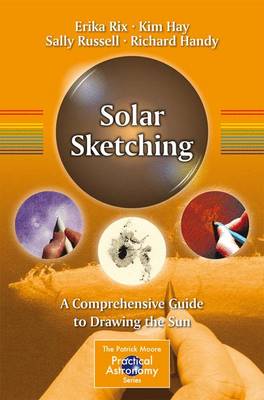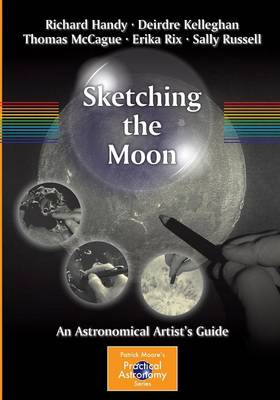The Patrick Moore Practical Astronomy
1 primary work • 3 total works
Book 178
From the authors of Sketching the Moon comes a comprehensive guide filled with richly illustrated, detailed drawing tutorials that cover a variety of solar phenomena. Explanations of what to expect visually from white light, Hydrogen-alpha and Calcium K filters are provided for those new to solar observing, along with essential tips on equipment, observing techniques and the practicalities of drawing at the eyepiece. Time-honored, traditional methods and media are described in tandem with innovative techniques developed and shared by contemporary astronomical sketchers. For the technically minded, detailed descriptions are given on how to use image manipulation software to bring your sketches to life through animation.
The Sun is the most visually dynamic object in our solar system and offers compelling, spectacular views. Knotted magnetic field lines give rise to powerful eruptions and form the intricate sunspots and arching prominences that make our nearest star one of the most exciting, yet challenging, astronomical objects to sketch. Facilitated by the availability of affordable dedicated solar telescopes and filters, the Sun has become an increasingly popular target amongst astronomical sketchers. The use of narrowband solar filters provides a wonderful opportunity to capture views of the Sun that have, until recently, been largely inaccessible.
You’ll discover easy to follow, step-by-step instructions geared toward your specific interests, be it technical sketching and contributing to science, personal study, or even fun solar outreach activities that help children learn through art. By using Solar Sketching as a reference, drawing the Sun has never been easier.
Astronomical Sketching
by Richard Handy, David B Moody, Jeremy Perez, Erika Rix, and Sol Robbins
This book presents the amateur with fine examples of astronomical sketches and step-by-step tutorials in each medium, including pencil, pen and ink, chalks and pastels, painting and computer graphics programs. This unique book can teach almost anyone to create beautiful sketches of celestial objects by following simple, illustrated, step-by-step instructions. Readers can select a chapter related to their preferred class of object, and rapidly learn techniques in several media. Each chapter contains useful information regarding equipment, techniques for preserving and archiving sketches, and suggestions for accurate record keeping.
Sketching the Moon
by Richard Handy, Deirdre Kelleghan, Thomas McCague, Erika Rix, and Sally Russell
For anyone artistically inclined, observing the Moon and attempting to sketch or paint it can easily become a passion. The Moon presents a broad array of tone, texture, and form. Capturing this in a painting or sketch at the eyepiece of a telescope – or even with binoculars – develops observational skills, leaves a record of the observation, and can also be a delightful and rewarding pastime. However, the choice of media available is extensive (acrylic paint, oils, pen, charcoal, etc., and even computer art programs), and there is no existing text that fully explains all lunar sketching and painting techniques in each respective medium. This beautiful and graphically rich book fulfills this requirement. It presents detailed step-by-step instructions, in the form of illustrated tutorials for every major medium employed to represent the Moon. It also provides practical advice on how to sketch outdoors at night (not ideal conditions for an artist!).
This is easily the most extensive book on the subject of lunar art for amateur astronomers, particularly those observing through a telescope. The diverse features of the lunar surface will attract and entice readers to review the number of different media presented, exciting and inspiring them with the possibilities of learning to depict all of the fascinating aspects of Earth's very own satellite.


